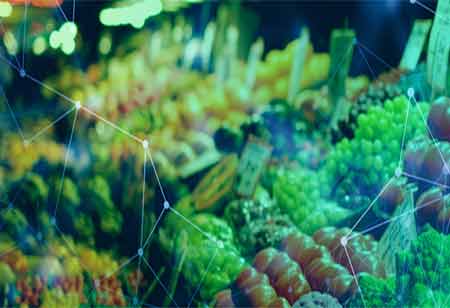Thank you for Subscribing to Food Business Review Weekly Brief
- Home
- Topics
- Alternative Proteins and Plant Based Food
- Beer and Wine
- Canned Beverages
- Coffee And Tea
- Food and Beverage Consulting
- Food and Beverage Financial Service
- Food And Beverages Marketing
- Food Distributors
- Food Ingredients
- Food Sustainability
- Plant Based Food and Beverages
- Seafood Suppliers
- Supplement Manufacturing
- Wine Investment
- News
- Vendor Viewpoint
- CXO Insights
- Conferences
- Newsletter
- CXO Awards
-
Popularity Of Robotics In Food Manufacturing.
The most popular applications in primary and secondary processing are the industrial and cooperative robots in the food industry.

By
Food Business Review | Friday, January 08, 2021
Stay ahead of the industry with exclusive feature stories on the top companies, expert insights and the latest news delivered straight to your inbox. Subscribe today.

The growth in adapting to the latest technological advancements has escalated highly in recent times, as the manufacturers strike hard to stay on top of the global scale production standard.
FREMONT, CA: The most popular applications in primary and secondary processing are the industrial and cooperative robots in the food industry. Robotic automation has initiated a wide range of application rotation in sectors all over the globe, and out of many, the food processing industry is considered the final frontier of robotic automation.
Industrial and collaborative robots can be utilized all through the food supply chain. Customarily, food processing was one of the most reluctant sectors that were difficult to automate. In recent times, advanced technological advances are prevailing over these obstacles.
High-volume food production has always been a contest for the robots, which created many obstacles such as shape and size that made it difficult to grasp the item. Besides, the delicate food items carry stricter requirements, considering the quality, making them more complicated to pick.
The introduction of modern grippers in robotic technology for food processing is considered one of the most innovative step-forwards. Industries have soft grippers that can take care of sensitive food products and grasp them quickly.
More grippers like the vacuum gripper delicately maintain the product, even when irregularly shaped. Numerous advanced grippers are coupled with secure robotic vision technology to compensate for product shape irregularities with greater consistency and accuracy in processing applications.
Robotic automation can be effectively utilized in more than one way considering primary & secondary food processing. Such as:
• Cleaning and maintenance of safe working environments
• Cake decorations
• Cutting and slicing of meat
• Grabbing and placing fruits and vegetables
Food processing has been a delicate industry for robotic technology for a decade. The problems that survive in the food products have barred the widespread adoption of n automated technology. Nevertheless, the recent development in technology has led to the increasing use of robotics in the food and beverage industry.






